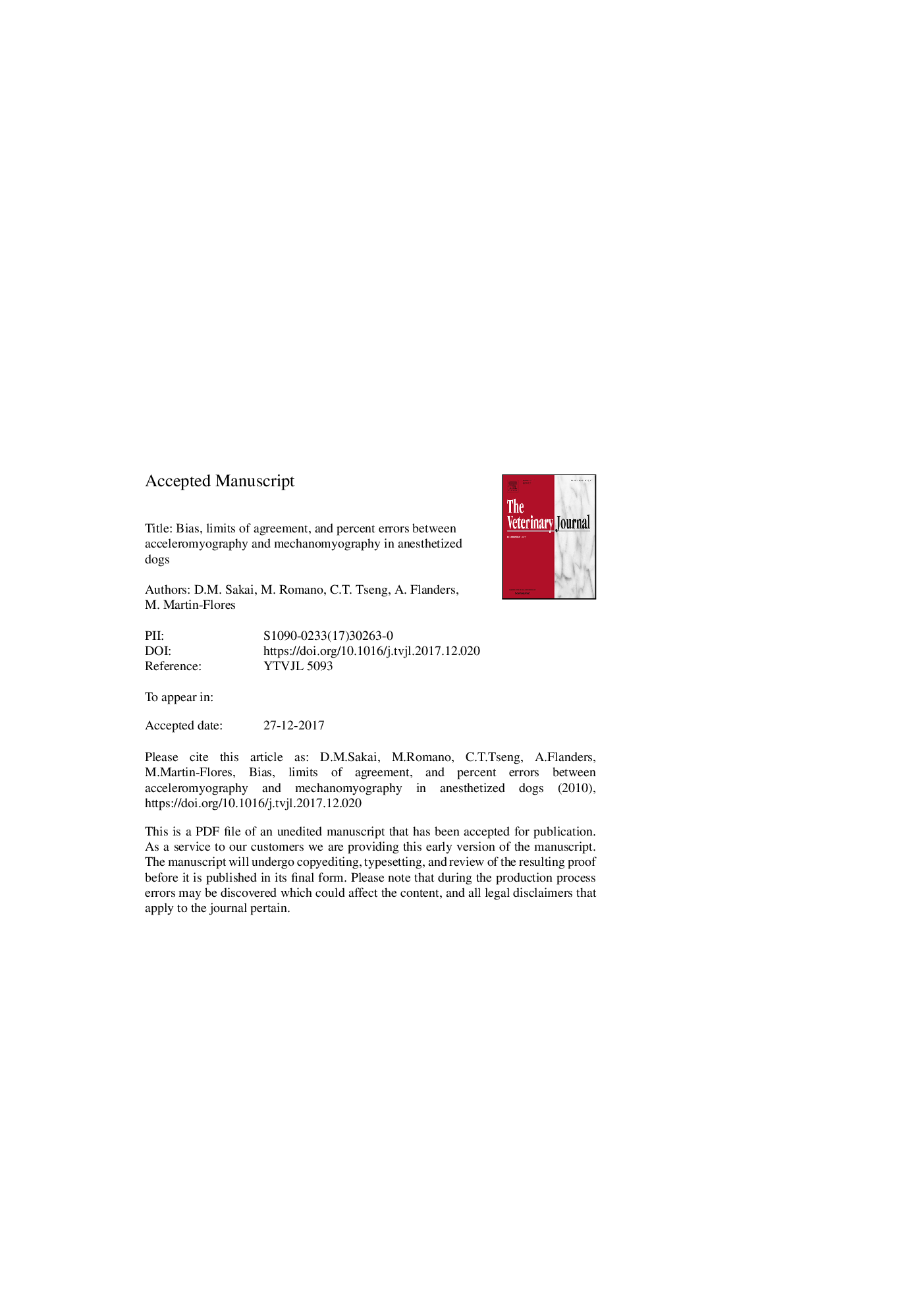| Article ID | Journal | Published Year | Pages | File Type |
|---|---|---|---|---|
| 8504910 | The Veterinary Journal | 2018 | 20 Pages |
Abstract
This study compared measurements of neuromuscular function with mechanomyography (MMG) and acceleromyography (AMG) in nine anesthetized dogs receiving 0.1 mg/kg vecuronium intravenously. Train-of-four (TOF) stimulation was applied to each ulnar nerve every 15 s. The resulting amplitude of the first twitch (T1) and the TOF ratio were measured with both monitors. The baseline TOF ratio (prior to vecuronium), onset time (time of injection to T1 < 5%), recovery index (time between T1 values of 25% and 75%) and duration of neuromuscular block (injection to TOF 0.9) were recorded. The MMG TOF ratios when the AMG first reached 0.7 (AMG 0.7) and 0.9 (AMG 0.9) during recovery were also recorded. Values were compared with paired tests and individual errors > 25% between monitors were identified for each dog. Bias, limits of agreement (LOA) and percentage error (PE) between methods were calculated from Bland-Altman plots for T1 and TOF ratio for the complete data set, and for TOF â¥Â 0.7 during recovery. There were no statistical differences in baseline TOF ratio, onset, recovery index, duration, AMG 0.7 and AMG 0.9. Individual errors > 25% were evident in onset, recovery index, AMG 0.7 and AMG 0.9. Overall, T1 and TOF ratio had a small bias, wide LOA and PE > 100%. Percent error was reduced to 30% when TOF â¥Â 0.7 was analyzed. Although there were no statistical differences between MMG and AMG in any variable of interest, individual discrepancies, wide LOA and high PE suggest that these monitors should not be used interchangeably for serial measurements on the same animals.
Keywords
Related Topics
Life Sciences
Agricultural and Biological Sciences
Animal Science and Zoology
Authors
D.M. Sakai, M. Romano, C.T. Tseng, A. Flanders, M. Martin-Flores,
